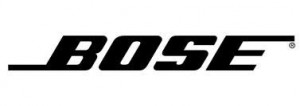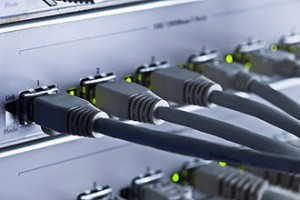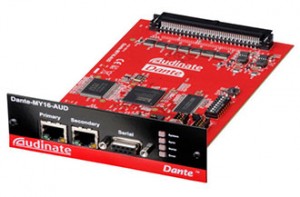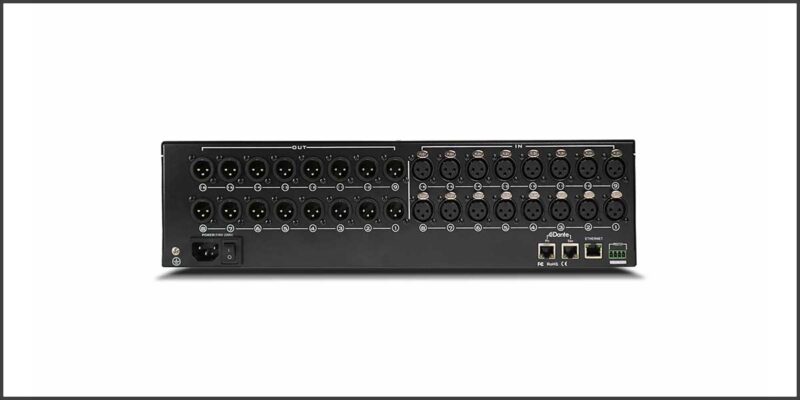Audinate Goes Mainstream in Partnership with BOSE – So Much for Better Sound Through Marketing
 Everyone in ProAV generally makes fun of BOSE Corporation. For years, it’s sold products to consumers without any technical specs, performance details and without any information about how a product it makes is differentiated from another product of a different brand (e.g., Sony, Mitsubishi or Panasonic). But, there’s one thing we universally love with the BOSE brand name on it: its noise cancellation headphones. No one else makes better ones — not JBL, not Sony and certainly not Sennheiser.
Everyone in ProAV generally makes fun of BOSE Corporation. For years, it’s sold products to consumers without any technical specs, performance details and without any information about how a product it makes is differentiated from another product of a different brand (e.g., Sony, Mitsubishi or Panasonic). But, there’s one thing we universally love with the BOSE brand name on it: its noise cancellation headphones. No one else makes better ones — not JBL, not Sony and certainly not Sennheiser.
 And, for years, we’ve joked that BOSE is “better sound through marketing.”
And, for years, we’ve joked that BOSE is “better sound through marketing.”
But, now BOSE has joined forces with companies like JBL, Bosch, Shure, Yamaha and Peavey, albeit indirectly, with its new partnership with Audinate to license the company’s Dante patented media networking technology. In case you’ve paid ZERO attention to the dozens of times we’ve written about and explained Audinate, it has patented the way that AV systems are connected and transport media over standard IT networks, calling it Dante. Over 80 companies have licensed it and it’s a who’s who in ProAV – besides all the above companies mentioned, it includes audio and video powerhouses like Extron, MediaMatrix, PreSonus, Soundcraft, Stewart Audio, Harman, Inter-M, Lectrosonics, Ashley, Digico and 70 other companies that have all decided to incorporate it as a networking AV standard. Dante is a killer technology – I stake my reputation on that as I’ve personally evaluated it.
Dante is built on IT standards, and is a complete media networking solution. Truth is (and this isn’t marketing-speak), Dante delivers low-latency, tightly synchronized, sample-accurate playback, while simplifying installation and configuration of AV networks.
 And, this BOSE deal means it will become a household name in a matter of time – much like THX did in the 1990s. Mark my words – May 22, 2013.
And, this BOSE deal means it will become a household name in a matter of time – much like THX did in the 1990s. Mark my words – May 22, 2013.
If you don’t understand AV over a network, let me attempt to explain (with thanks to Audinate, technically):
In the old analog universe of sources (e.g., RCA line audio, composite video, etc), a key element of the system is that the logical and physical connections were one and the same. This means that most connections were point-to-point and individual cables represent each channel – sort of a “connect everything to a home-run switcher to manage all sources and switch them to the display or speakers” situation. Implementing a complex audio system required careful design that had to be undertaken in advance and a lot of converter, interface and standards boxes had to be used whenever one signal wasn’t compatible with another. In other words, if you wanted to connect an s-video signal to a projector that only had component video inputs you’d have to convert that signal.
And, analog audio required a physical copper cable for routing signals, but these systems offer little flexibility to accommodate unplanned changes. Moving or adding equipment in a location will add significant costs as AV system integrators need to run separate conduits for signals of differing voltages and pull heavy copper wire through them. We all agree with that, right?
 Well, digital media distribution significantly reduces implementation by separating the logical and physical connection attributes of the AV system. Thus, doing a digital network can offer significant costs saving in time and money, while providing better performance than analog wiring. Digital audio distribution eliminates masses of bulky, heavy, expensive and inflexible copper wires. Installation is made simple using digital networking; a single lightweight, inexpensive CAT5 cable can carry all the required inputs and outputs as digital audio data.
Well, digital media distribution significantly reduces implementation by separating the logical and physical connection attributes of the AV system. Thus, doing a digital network can offer significant costs saving in time and money, while providing better performance than analog wiring. Digital audio distribution eliminates masses of bulky, heavy, expensive and inflexible copper wires. Installation is made simple using digital networking; a single lightweight, inexpensive CAT5 cable can carry all the required inputs and outputs as digital audio data.
IP (Internet Protocol) over Ethernet is the most widely deployed approach to networking and represents the best available foundation technology for media networking. Cat5 cables, switches and other hardware components used to build such networks are mass-market items in the IT domain.
Audinate’s patent-pending Dante technology is a flexible Internet Protocol (IP) and Ethernet-based digital AV network technology that eliminates the many bulky cables needed to provide point-to-point wiring for analog AV installations.
With Dante, existing infrastructure can be used for high performance audio as well as for ordinary control, monitoring or business data traffic. Digital networks utilize standard Ethernet over IP offering high bandwidth capable of transporting hundreds of high quality channels over 100MBs or 1 Gigabit Ethernet.
Set-up and configuring the system is made easy as well, saving enormous installation costs and long term cost of ownership on a digital network. The physical connecting point is irrelevant: Audio signals can be made available anywhere and everywhere. Patching and routing now become logical functions configured in software, not via physical wired links.
Dante delivers a no hassle, self configuring, true plug-and-play digital audio network that uses standard Internet Protocols over 100Mb and/or Gigabit Ethernet. Dante technology distributes digital audio plus integrated control data with sub millisecond latency, sample-accurate playback synchronization, extreme reliability and high channel counts.
This may sound like a Dante commercial, but, no dice — they aren’t an advertiser or sponsor of rAVe! I am writing this because I believe in the technology AND KNOW it will become the default-audio standard for networking. Just you wait, the other manufacturers who haven’t adopted it — it will.
What about AVB? Audio Video Bridging (AVB) is a common name for the set of technical standards developed by the Institute of Electrical and Electronics Engineers (IEEE) Audio Video Bridging Task Group of the IEEE 802.1 standards committee. The charter of this organization is to “provide the specifications that will allow time-synchronized low latency streaming services through IEEE 802 networks.”
Well, guess what? Dante will integrate AVB protocols, so they’ll be interchangeable. Audinate has announced that Dante will be AVB-compliant as these standards are ratified, and is a Promoter Member of AVnu, an industry group that seeks to promote these new standards.





